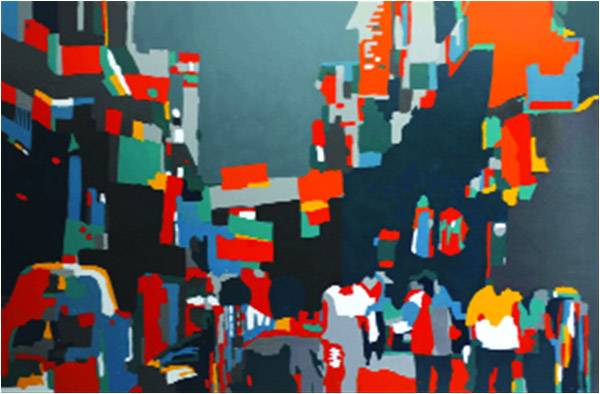
A promising graduate of the National College of Arts in Lahore, Qadir Jhatial is naturally happy and relentlessly optimistic. The talented young artist brings his characteristic cheerfulness to his brightly coloured, vibrant artworks. Known for his remarkable mastery over the use of space, colour, and texture, Jhatial uses simple themes to create what some consider masterful profusions of colour, energy, and life on canvas.
You recently secured a place (and a scholarship) on the residency program of the Can Serrat International Art Centre. What do you hope to accomplish as part of this program?
I am very fortunate to have been selected for the program at the Can Serrat International Art Centre. The institution is located in a natural park in the Montserrat Mountains, just outside Barcelona. It offers 30-day residencies throughout the year to artists from all over the world. The institution is known for being inclusive, accommodating, and liberal. It attracts artists of all nationalities, ages, religions and persuasions, and it is not elitist. That is what attracted me to the program. I will get to work with artists from all over the world – some older than me and some younger – and hopefully grow both as a person and as an artist. I am naturally interested in other people, their lives and their stories. I hope to be able to make many friends during my residency and gain a deeper understanding of the lives of people around the globe. I have been awarded a partial scholarship to the program by the jury and now need to come up with the rest of the money to finance the residency.
How do you plan to do that? Does the government offer any assistance in such cases?
I am not sure if the government has programs to help artists who have secured partial scholarships at international institutions but, even if it does, I am not the right candidate for such assistance. There are other more deserving artists who need help from the government. I have been selling my work for more than four years and recently had a very successful solo show in Islamabad. I hope to sell enough pieces to raise the funds I need. I have already told the administrators of the program that it may take me some time to save the money needed and they have been very understanding. I am hoping for the best.
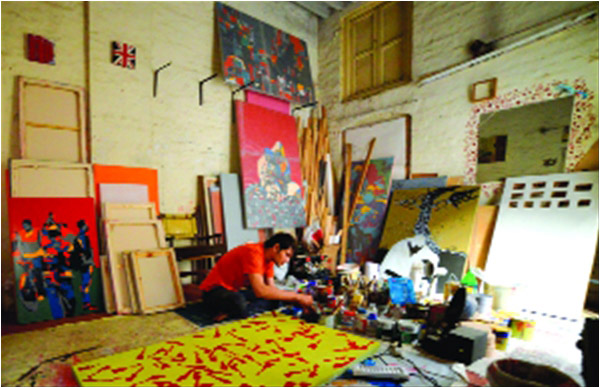
"I do not believe that art necessarily has to communicate complex ideas, thoughts, and concepts"
You are a graduate of the highly regarded National College of Arts (NCA) in Lahore. The institution is, among other things, known for an increasingly large class divide in its student body. What was your experience like?
It is true that a huge, and rather painful, divide exists between the haves and have-nots among students at NCA, but this divide is not limited to NCA alone. It can be seen everywhere in Pakistani society today. It may be more visible at NCA because it is an institution devoted to the arts and known for being liberal and open-minded. At NCA, the privileged certainly have access to more resources, superior materials, greater exposure, and better prospects after graduation. This is unfair and the cause of a lot of hurt. It bothered me a little in the beginning, but I learned to deal with the situation by focusing on my own strengths and putting my heart and soul into my work. It is also heartening to see a number of NCA graduates who were neither rich nor well connected while at college now doing exceedingly well in the arts. Their success is both encouraging and inspirational. My occasionally hurt feelings notwithstanding, I had a great time at NCA. I learned a lot, met many very interesting people, and emerged as a confident artist with a unique style.
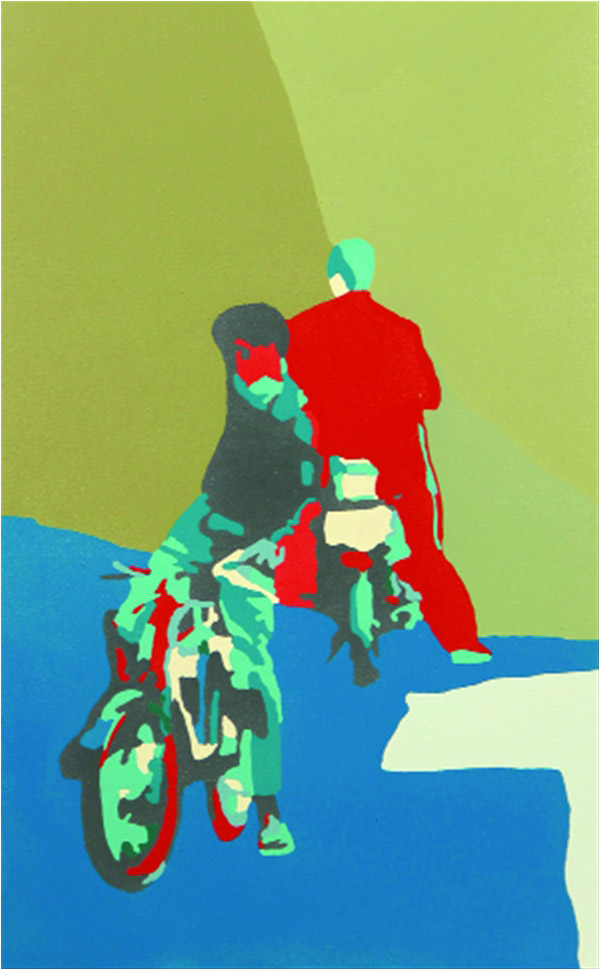
Your work is bold, bright, and vibrant. It is not, however, complex. Why is that?
I do not believe that art necessarily has to communicate complex ideas, thoughts, and concepts. I am a simple person who derives great pleasure from the simplest of things. My work is, therefore, a celebration of the simple pleasures of life. Women shopping in a bazaar. Young men enjoying rides on a motorcycle. Children hankering for ice-candy. Friends hanging out with each other… and many other similar pleasures, however simple, bring genuine joy to millions of Pakistanis. My work is a celebration of such delights, ones that do not require large amounts of money.
You use very bright and bold colours in your works.
I use vibrant colours to convey happiness and joy. The activities I depict might be austere, but the joy they bring can only be celebrated using a rich and vivid palette.
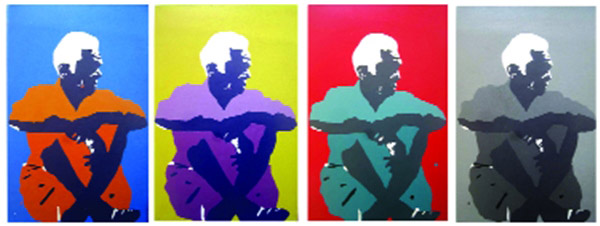
"I am fascinated by the way in which the ordinary Pakistani lives amid poverty and insecurity, and yet finds things to be happy about"
You work primarily with enamel. Why have you chosen a relatively uncommon medium?
Enamel adds a little shine and energy to the colours I work with. I find the medium most accurately depicts the colours I have in mind when thinking of the joys of life.
Whom do you consider among Pakistan’s foremost artists today?
Pakistan has, and continues to produce, artists of a very high calibre. I am particularly fond of Mian Ijaz ul Hassan, Moeen Farooqui, Mohammad Ali Talpur, and Anwar Saeed.
Do you look to their works for inspiration?
I have great regard for the artists I have just mentioned and for a number of others, but I do not look to them for inspiration. I believe that I have a unique style that does not borrow from other artists. Some people feel that I am inspired by the works of Andy Warhol. If this is true, it is something that must have happened unconsciously because I am a tremendous fan of Warhol and consider him one of the most original artists of all time.
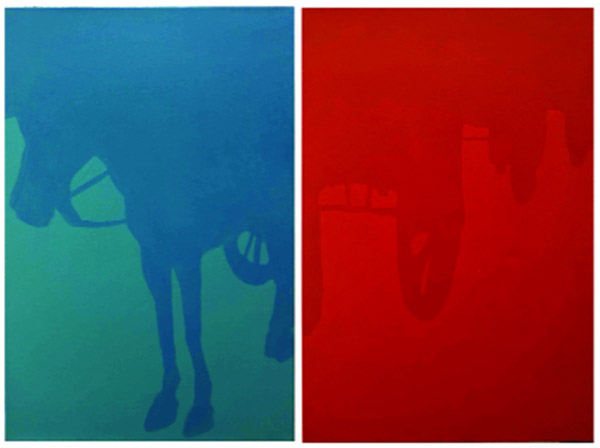
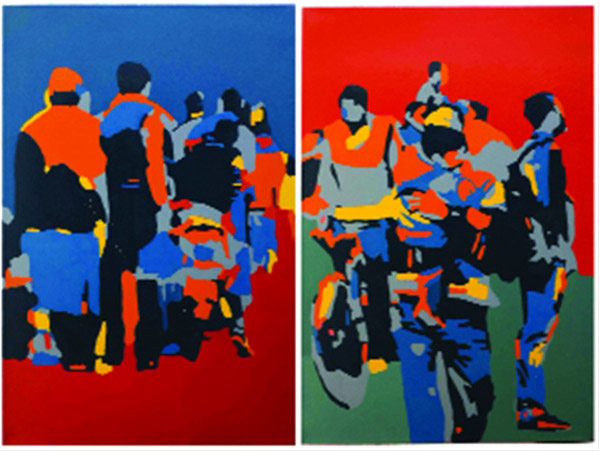
Where do you find inspiration for your work?
The life and activities of the average Pakistani are my source of inspiration. I am fascinated by the way in which the ordinary Pakistani lives amid poverty, insecurity, failing infrastructure, and diversity, and yet finds things to be happy about.
You have a large studio in Anarkali, one of noisiest, busiest places in Lahore. How do you find peace and quiet to create art?
I do not need peace and quiet to work. It is the noise and energy of Anarkali that makes my creative juices flow. Anarkali is a universe in itself: a vibrant, lively and unabashedly optimistic universe. I would not trade my studio in the bazaar for any other in the whole world. Even if I make a lot of money in the future, Anarkali will always be my home. Where else would I be surrounded by such wonderfully interesting, lively, and genuine people?
The Khaas Gallery in Islamabad recently exhibited your works in a one-person show titled “Streetwise.” How did you create works for the show?
The show was curated by the well-known art critic, Aasim Akhtar, who gave me a lot of freedom to create and select works for the exhibition. It took me the better part of a year to create the 13 works displayed. I wanted to create works that were visually appealing and would look good on display both in homes and offices. I wanted my works to be decorative. I used images from everyday life – streets full of people, children playing in their neighbourhood, street vendors selling their wares, mothers taking care of their children, boys riding bikes – and I used bright, vibrant colours to bring out the many pleasures of everyday life without showing the accompanying trials and tribulations. The works were designed to be happy, optimistic, and cheerful.
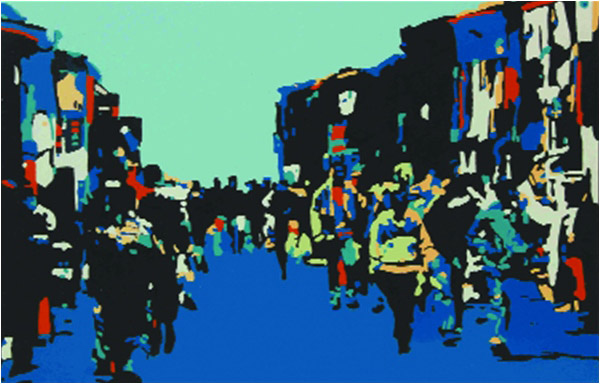
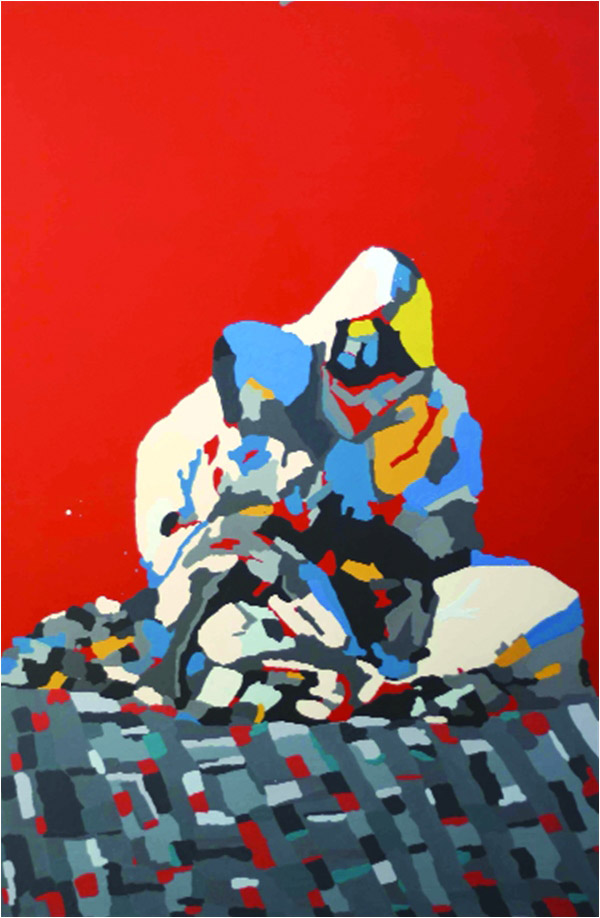
Why do you paint?
The truthful answer is that I paint to make a living. That I enjoy making my living as an artist is a better answer. There are many ways for one to earn money. I am fortunate in that I can do so by doing something that brings me a great deal of satisfaction, happiness, and contentment.
How is that you are always smiling?
It must be because I am always happy.
Ally Adnan lives in Dallas and works in telecommunications. He writes on culture, history, and the arts. Follow him @allyadnan. All the photographs in this article are reproduced courtesy of Shaharyar Khan

